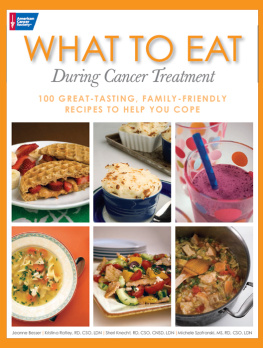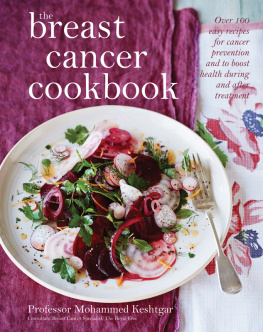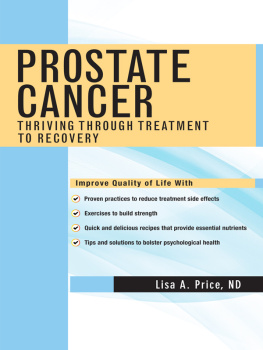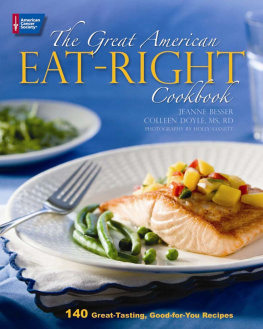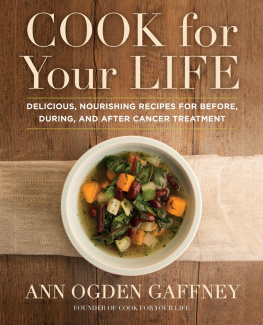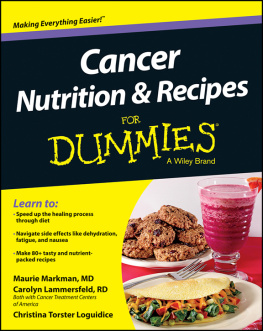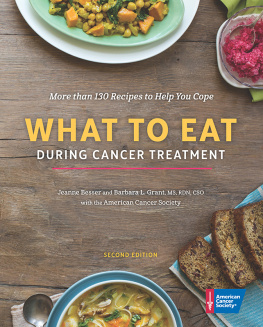
Published by the
American Cancer Society
Health Promotions
250 Williams Street NW
Atlanta, GA 30303-1002
Copyright 2009 American Cancer Society
All rights reserved. Without limiting the rights under copyright reserved above, no part of this publication may be reproduced, stored in or introduced into a retrieval system, or transmitted in any form or by any means (electronic, mechanical, photocopying, recording, or otherwise) without the prior written permission of the publisher.
Printed in Canada
Photography: Joey Ivansco
Food Styling: Jeanne Besser
Nutritional Analysis: Madelyn Wheeler, MS, RD
Design and Composition: Jill Dible
Project Supervising Editor: Jill Russell
7 6 5 4 3 11 12 13 14 15
Library of Congress Cataloging-in-Publication Data
What to eat during cancer treatment : 100 great-tasting, family-friendly
recipes to help you cope / Jeanne Besser [et al.].
p. cm.
Includes index.
ISBN-13: 978-1-60443-005-9 (pbk. : alk. paper)
ISBN-10: 1-60443-005-2 (pbk. : alk. paper)
1. CancerDiet therapyRecipes. I. Besser, Jeanne.
RC271.D52W53 2009
641.5631dc22
2009019771
AMERICAN CANCER SOCIETY
Managing Director, Content: Chuck Westbrook
Director, Book Publishing: Len Boswell
Managing Editor, Books: Rebecca Teaff, MA
Books Editor: Jill Russell
Book Publishing Coordinator: Vanika Jordan, MSPub
Editorial Assistant, Books: Amy Rovere
For more information about cancer, contact your American Cancer Society at
800-227-2345 or cancer.org.
Quantity discounts on bulk purchases of this book are available. Book excerpts can also be created to fit specific needs. For information, please contact the American Cancer Society, Health Promotions Publishing, 250 Williams Street NW, Atlanta, GA 30303-1002, or send an e-mail to .
Table of Contents

Note to the Reader
Throughout this book, you will see these icons:
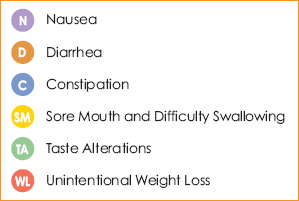
The recipes in this book are organized according to symptoms: nausea, diarrhea, constipation, sore mouth and difficulty swallowing, taste alterations, and unintentional weight loss. However, many of the recipes in the book are appropriate for more than one side effect. When you see the icon for one of the symptoms listed above (either alongside the recipe or in the list of recipes on the next few pages), it means that the recipe is also appropriate for that side effect.
The nutrition information shown for each recipe represents one serving. Optional ingredients and ingredients listed without measurement (such as salt and pepper) are not represented in the analysis. When two choices are given, the first was used in the analysis.
The information in this book is not official policy of the Society and is not intended as medical advice to replace the expertise and judgment of your cancer care team. It is intended to help you and your family make informed decisions, together with your doctor.
Your doctor may have reasons for suggesting a treatment plan different from the suggestions in this book. Dont hesitate to ask him or her questions about your treatment options.
For more information about cancer and cancer treatment, contact the American Cancer Society at 800-227-2345 or visit our Web site at cancer.org.
Recipe List by Symptom
Chapter 1. Nausea
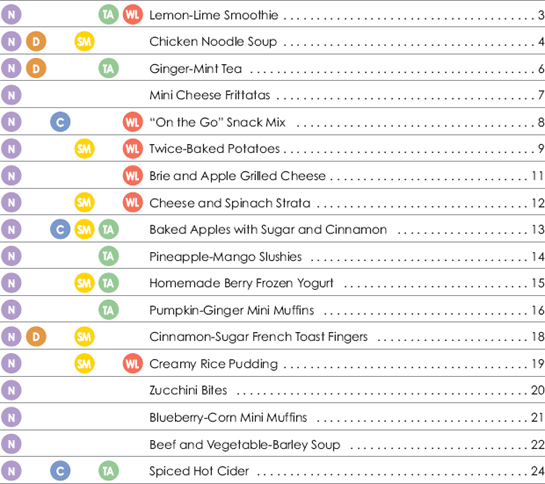
Chapter 2. Diarrhea


Chapter 3. Constipation
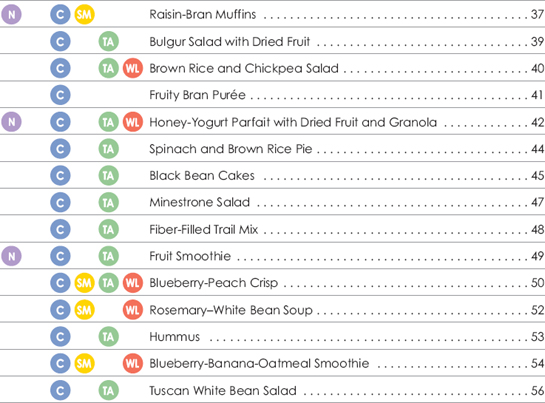
Chapter 4. Sore Mouth and Difficulty Swallowing


Chapter 5. Taste Alterations
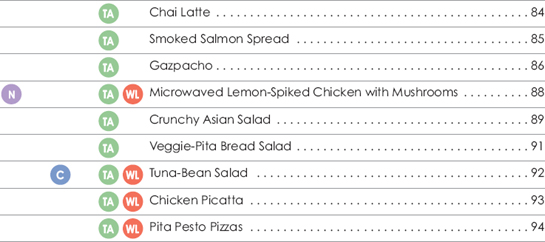
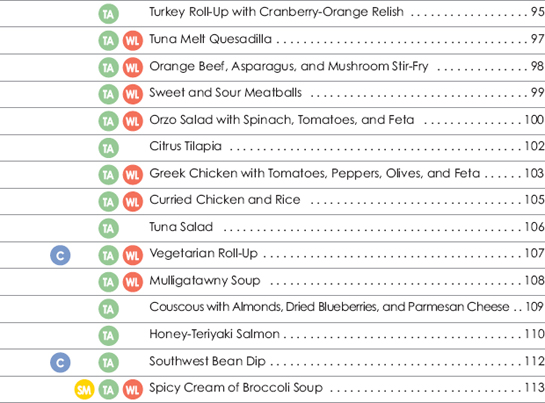
Chapter 6. Unintentional Weight Loss

Introduction
I f you are reading this, you or someone you know is probably going throughor preparing to go throughcancer treatment. This can be a stressful and difficult time, a time filled with challenges and change.
No one can predict how cancer treatment will affect you. Not everyone experiences side effects and, for those who do, not everyone has the same side effects or reacts to treatment in the same way. Some people going through cancer treatment continue to enjoy eating and have a normal appetite throughout treatment. Others have days when they dont feel like eating at all. For many, side effects come and go.
People with cancer have unique nutritional needs and issues related to eating; whats more, these needs may change throughout the cancer experience. Your appetite may change from day to day. Foods may not taste or smell the way they did before treatment. You may be surprised by some of the foods that appeal to you during your treatment. Cancer and cancer treatments can also cause nausea, vomiting, diarrhea, constipation, mouth sores, and swallowing problems, all of which affect what and how you eat. You may have to deal with weight loss or weight gain. Weight loss can lead to weakness and fatigue.
No matter what side effects you may experience, nutrition is an essential part of dealing with cancer and cancer treatment. During your treatment, you will be concentrating on fighting cancer. Eating well will help keep you strong and supply you with the nutrients your body needs. Maintaining good nutrition will help you feel better and stay stronger.
Eating as well as you can during your treatment and your recovery is an important part of taking care of yourself. There are no hard and fast rules about how to eat during cancer treatment. Eat as healthfully as possiblethe importance of this cannot be overstated. However, do not be too hard on yourself if you have days on which your appetite is poor. In some of the recipes, we list ingredients you can include to add more calories and flavor, depending on how you are feeling. Some of these ingredients are not necessarily things we would encourage as a regular part of your daily diet, such as using full-fat dairy products to increase calories or ingredients high in sodium to add flavor. During cancer treatment, as during regular life, it is important to be mindful of the bigger picture. Moderation is key.

